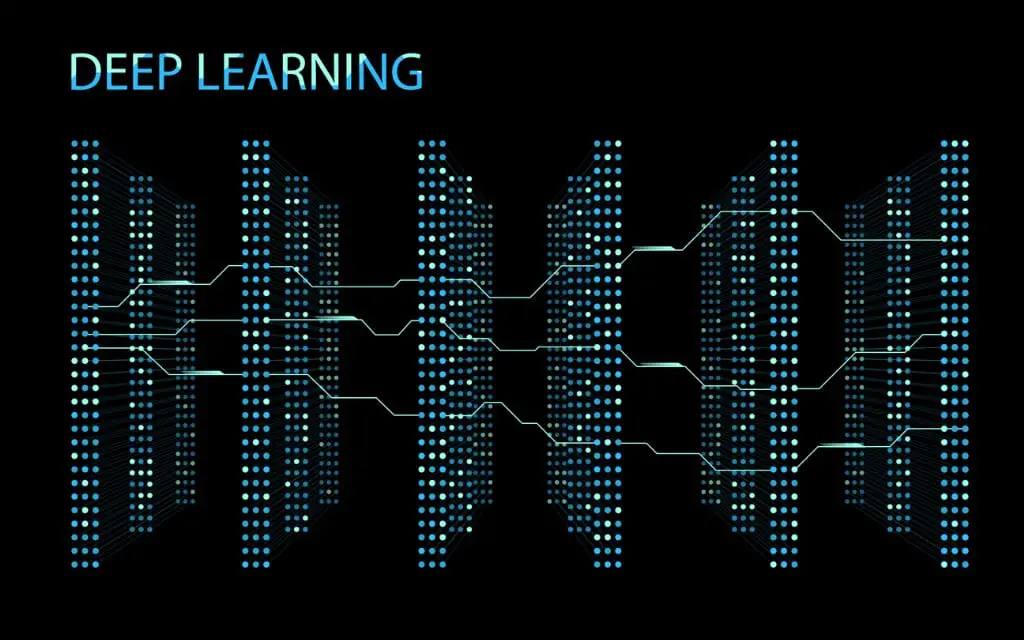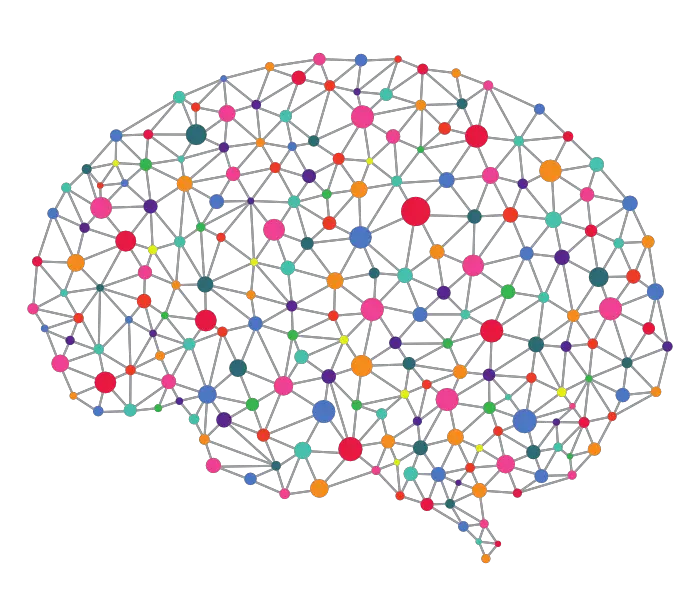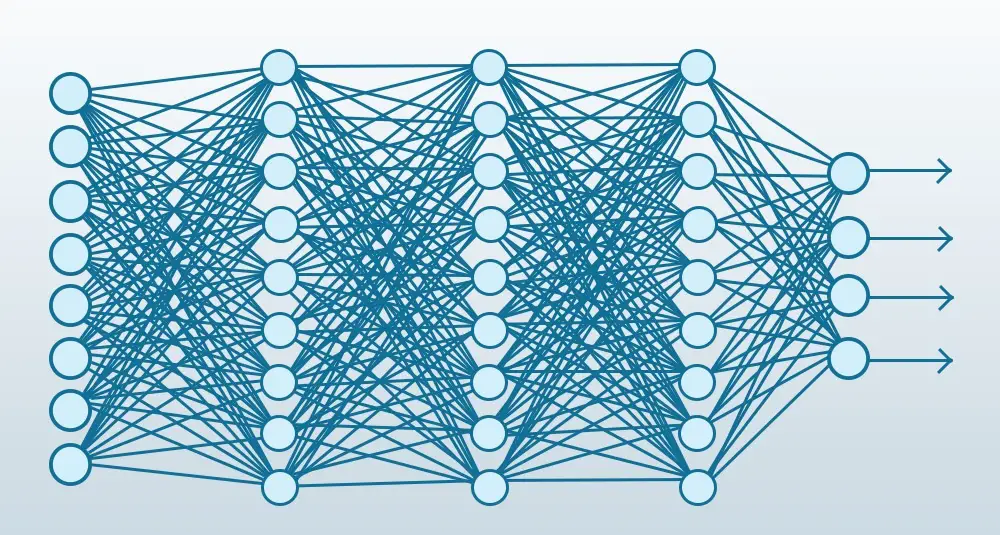Delve into the realm of Deep Learning and Neural Networks, the linchpin technologies that drive the burgeoning field of Artificial Intelligence (AI). Deep Learning, a subset of Machine Learning, mimics the intricate functionality of the human brain through the emulation of neural networks. These networks comprise layers of interconnected “neurons” that progressively analyze data, extracting increasingly abstract and complex features.

One of the salient characteristics of Deep Learning algorithms is their ability to learn directly from raw data, eliminating the need for explicit feature engineering. Through a process akin to human learning, these algorithms identify underlying patterns and insights within the data. This remarkable capability has catapulted Deep Learning to the forefront of AI applications, including image recognition, natural language processing, speech recognition, and medical diagnostics.

The structure of Neural Networks mirrors that of the human brain, featuring an input layer that receives data, followed by multiple hidden layers that progressively extract higher-level features, and an output layer that yields the final prediction or decision. The parameters of these networks, including the number of layers, the number of neurons in each layer, and the strength of the connections between neurons, are meticulously adjusted during the training phase. This tuning process, known as “backpropagation,” leverages a gradient descent algorithm to minimize a predefined error metric, enhancing the network’s ability to accurately capture the underlying patterns within the data.

Deep Learning has revolutionized numerous industries, including healthcare, finance, manufacturing, and transportation. In healthcare, Deep Learning algorithms have been instrumental in the development of medical imaging tools that can detect and classify diseases with unprecedented accuracy, leading to more timely and effective interventions. In finance, these algorithms enhance fraud detection systems, refine risk assessments, and optimize portfolio management strategies. In manufacturing, Deep Learning empowers predictive maintenance systems, ensuring proactive equipment maintenance to minimize downtime and maximize efficiency.
Harnessing the unparalleled processing prowess of Deep Learning and Neural Networks opens up new horizons in AI applications, enabling machines to perform tasks that were once considered exclusive to human cognition. As these technologies continue to mature, their impact on society will only intensify, driving advancements in fields as diverse as robotics, autonomous vehicles, and space exploration.## Deep Learning and Neural Networks: The Brains Behind AI
Executive Summary
Deep learning and neural networks are at the forefront of artificial intelligence (AI), enabling machines to learn complex tasks and make sophisticated decisions. This article delves into these transformative technologies, exploring their inner workings, applications, and impact on various industries.
Introduction
In the era of AI, deep learning and neural networks have emerged as groundbreaking technologies that empower machines with the ability to learn and process information in ways akin to the human brain. These technologies underpin a vast array of applications, from self-driving cars to medical diagnosis, revolutionizing industries and reshaping our world.
FAQs
-
What are deep learning and neural networks?
Deep learning is a subset of machine learning that uses artificial neural networks, which are computational models inspired by the human brain. These networks learn by processing data through multiple layers, identifying patterns and making predictions. -
How do deep learning and neural networks work?
Neural networks consist of layers of artificial neurons, each connected to other neurons. These neurons receive input data, apply mathematical transformations, and pass the transformed data forward. Through a process called backpropagation, they adjust their weights and biases to minimize errors and improve predictions. -
What are the benefits of using deep learning and neural networks?
These technologies offer numerous benefits, including improved accuracy in data classification and prediction, enhanced ability to handle unstructured data, and automatic feature engineering, reducing the manual effort required for data analysis.
Subtopics
1. Applications of Deep Learning and Neural Networks
- Image recognition: Identifying and classifying objects in images with high accuracy for applications such as facial recognition and medical imaging.
- Natural language processing: Understanding, generating, and translating text, enabling chatbots, machine translation, and information extraction.
- Computer vision: Analyzing and interpreting images and videos, powering self-driving cars and surveillance systems.
- Speech recognition: Transforming spoken word into text, facilitating transcription, voice control, and voice-based search.
- Predictive analytics: Forecasting future outcomes based on historical data for risk assessment, demand planning, and resource management.
2. Types of Neural Networks
- Convolutional neural networks (CNNs): Used for image recognition and computer vision tasks, extracting features by applying filters and pooling operations to data.
- Recurrent neural networks (RNNs): Designed for sequential data, such as natural language processing, by feeding past output back into the network to capture contextual information.
- Transformer neural networks: A recent advancement in NLP, capable of capturing long-term dependencies in text and performing tasks such as machine translation and question answering.
- Generative adversarial networks (GANs): Used for generative modeling, such as creating realistic images and music, by pitting a generative network against a discriminative network.
- Autoencoders: Unsupervised learning models that learn compressed representations of data, enabling feature extraction and data denoising.
3. Ethical Considerations in Deep Learning and Neural Networks
- Bias and fairness: Ensuring fairness and reducing bias is crucial, as algorithms may inherit biases present in training data, leading to discriminatory outcomes.
- Privacy and security: Handling sensitive data ethically is paramount, employing techniques such as encryption and differential privacy to protect user information.
- Transparency and interpretability: Creating explainable and transparent models is essential, enabling users to understand how decisions are made and reducing the risk of misuse.
- Job displacement: The impact of AI on employment must be addressed, by providing training and reskilling opportunities, ensuring a smooth transition into the automated workplace.
- Accountability and responsibility: Establishing clear guidelines for the responsible development and deployment of deep learning and neural networks is crucial to address potential negative consequences.
4. Future Directions of Deep Learning and Neural Networks
- Hardware advancements: Specialized hardware, such as GPUs and TPUs, enable faster training and processing of deep learning models.
- Edge AI: Deploying deep learning models on devices at the edge, enabling real-time decision-making and reducing latency.
- Lifelong learning: Developing algorithms that continuously learn and adapt from new data, akin to human learning.
- Artificial general intelligence (AGI): The pursuit of machines that can perform a wide range of cognitive tasks typically reserved for humans.
- Quantum computing: Exploring the potential of quantum computers to accelerate deep learning algorithms and enable novel applications.
Conclusion
Deep learning and neural networks are transformative technologies that have revolutionized the AI landscape. Their ability to learn from data, handle complex tasks, and make accurate predictions has led to a wide range of applications, from empowering self-driving cars to enhancing medical diagnosis. As these technologies continue to evolve, it is crucial to address ethical considerations, foster responsible development, and explore future directions. By leveraging the potential of deep learning and neural networks ethically and effectively, we can harness these technologies to create a better, more equitable, and technologically advanced future.
Keyword Tags:
- Deep learning
- Neural networks
- Artificial intelligence
- Machine learning
- Data science
